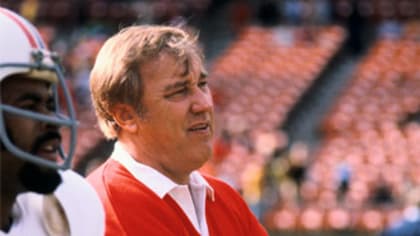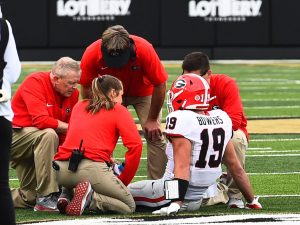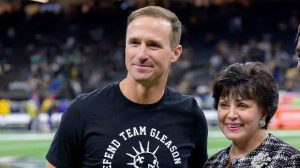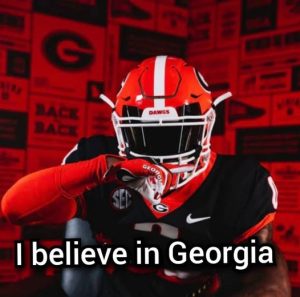
The former Giants offensive coordinator, Ron Erhardt, has died.
Ron Erhardt, a former NFL head coach who oversaw the Giants’ offensive schemes during Super Bowl XXI and XXV victories, died this morning in Boca Raton, Florida. He was eighty.
Erhardt worked for the Giants from 1982 until 1991. Ray Perkins, who was forced to resign from his position as head coach at the University of Alabama due to a strike, hired him. Bill Parcells, who had been New England’s linebackers coach in 1980 when Erhardt was the Patriots’ head coach, took Perkins’ place. Erhardt remained in the same spot, thanks to Parcells.
“Ron was a wonderful man and a great coach,” Giants President and Chief Executive Officer John Mara said. “He was a big part of our success in the 1980’s and was an important contributor to our first two Super Bowl championships.”
“We’re all saddened by the unexpected news of Ron’s death,” said Giants coach Tom Coughlin, who was the team’s wide receivers coach from 1988-90. “I just sent him a note at the end of the season when he celebrated his 80th birthday (on Feb. 27).”
During Erhardt’s eight seasons as offensive coordinator under Parcells, the Giants reached the playoffs five times, won three NFC East titles and two Super Bowls, the first with Phil Simms at quarterback, the second with Jeff Hostetler taking the snaps.

“I was privileged to be coached by him,” Hostetler said today. “I learned an awful lot from him. He went on and did some amazing things offensively. What amazes me is that system is still out there, still being used, and works as successfully as ever. It is, without a doubt, out of all the systems I’ve been involved with and that’s probably five, six, or seven different systems, it was the most simple as far as verbiage and most consistent.”
Under Erhardt, the Giants consistently had one of the NFL’s most productive rushing attacks. Joe Morris rushed for more than 1,000 yards three times, including 1,516 in the Giants’ first Super Bowl season. The Giants also finished in the Top 10 in the league in passing in 1984, ’85 and ’87.
“When I came here in 1988, Ron was the offensive coordinator,” Coughlin said. “He was a great guy to work with – he was a lot of fun. He kept things pretty loose. He was good on the field. We had some good football players here, so we were pretty successful. But I think the working relationship is the thing I remember the most. In those days in the old stadium, the offensive staff was in one office and the defensive and special teams were in one office. You were with each other all day long. There were many good things about that. When you first came in in the morning and everybody sat at their desk a few minutes before we started meeting, you’d kibbitz about what happened the night before and what was going to take place that day, whether you were in-season or out of season. There was always good fellowship and real good opportunities to plan what you were going to be doing going forward. We had a lot of fun doing that.

“We were eliminated from the playoffs in 1988; we competed in 1989 but lost; and we took home the championship in 1990. It was a wonderful encounter. I will never forget Ron giving me a very kind farewell when I left to become the head coach of Boston College (following Super Bowl XXV).
Simms missed the entire 1990 season after breaking his foot in the 15th game of the season. At that time, Hostetler was a seven-year veteran with limited playing experience. He took over and guided the Giants to five straight wins, including a 20-19 victory over Buffalo in Super Bowl XXV.
“By that time, I had already seen Ron’s wrath,” Hostetler said. “It wasn’t verbal lashings and things like that; they were pointed comments and under control, but he took the shots. So I knew that, hey, when the opportunity came, I better be ready. And I think that’s the thing he stressed so much is, ‘Listen, you don’t know when you’re going to get a shot. But when you get a shot, you better be ready and you can’t make this mistake, you can’t do this, you can’t do that. You better be ready.’ That was real good advice.”
Hostetler said Erhardt made subtle changes to the offense to account for his strengths.
“We did move the pocket around more and we were able to put a little more pressure on the defense by me being able to move around,” Hostetler said. “So that was the nice thing about it. They had those kinds of things offensively already in the package. We started to concentrate on them a little more and expand on them. But we kept doing the same things that we had done with Phil and that was the great thing about the offense. It had the ability to expand rather quickly.”
“We were a team that ran the ball and relied heavily on play-action pass,” Coughlin said. “I think you can honestly say that in those days, third down was just starting to become the kind of total offense and defense that it’s become in our present era. We had a means of expression that was direct and to the point. And to a certain extent, that same system followed me to Boston College and Jacksonville and when we came back here. The forbearer of the book we use today was used in those days. And a lot of guys that were in that system took it with them.”
Parcells left the Giants after the 1990 championship season and was replaced by Ray Handley, who took away Erhardt’s play-calling duties. In 1992, Erhardt joined the Pittsburgh Steelers as their offensive coordinator. He was there for four years and helped lead the Steelers to Super Bowl XXX following the 1995 season. But he departed the team soon afterward because of a personality conflict with Coach Bill Cowher. Erhardt’s last job in the NFL was as the Jets’ offensive coordinator in 1996.
In 1973, Erhardt joined the NFL as the backfield coach for the Patriots. Before getting promoted to offensive coordinator, he served in that capacity for four seasons. Erhardt led New England to a 21-27 record while serving as their head coach from 1979 to 1981.
Erhardt, a Mandan, North Dakota native, went 67-7-1 and captured two college division national titles while attending North Dakota State University.
Erhardt was a laid-back, amiable guy who could make his players laugh when they weren’t playing.
“I enjoyed Ron and his personality,” Coughlin said. “Ron had a lot of fun, let’s put it that way. He was a (kidder). He enjoyed it and everyone enjoyed it with him. He had one of those cantankerous laughs. I remember in the offseason the coaches would be running and lifting before the start of the offseason program. Ron would be hitting golf balls into a net down in the stadium. He wasn’t about to do any of that running and lifting stuff.”
/cdn.vox-cdn.com/uploads/chorus_image/image/66365021/1042976660.jpg.0.jpg)
“They still had projectors when I came into the league (in 1984),” Hostetler said. “I can remember all of the film sessions. Phil, Jeff (Rutledge) and I would sit in there, and Ron had this pattern every play. No matter what it was, it was reverse, and then forward again, reverse, forward again. Whether it was a good play or not, we knew it was going to be reversed and replayed four times. But there were times it got to be so monotonous that every once in a while you’d get in there and there wouldn’t be a reverse. It wouldn’t go back. And the next play would run through and the next play would run through – meaning he fell asleep. So of course we didn’t want to wake him up because it was quicker film study. We would just let him go for a while. Next thing you know he would catch himself and it was like he missed nothing – reverse, back again, reverse. He would wake back up and keep on going in the pattern like nothing happened. I have a lot of good memories of working with Ron.”







